Majeorona aper from Brazil, Photo by Leonardo Milhomem. 2005.
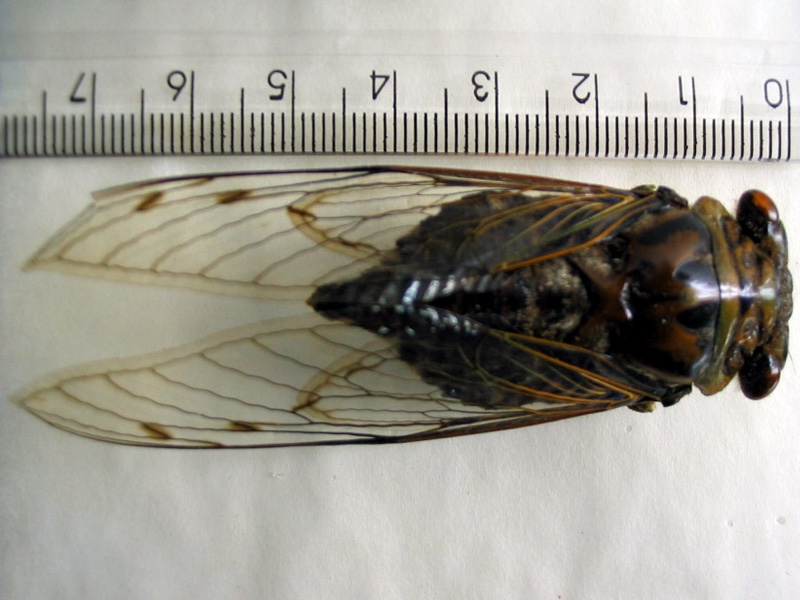
Majeorona aper from Brazil, Photo by Leonardo Milhomem. 2005.

Quesada gigas from Brazil, Photo by Leonardo Milhomem. 2005.
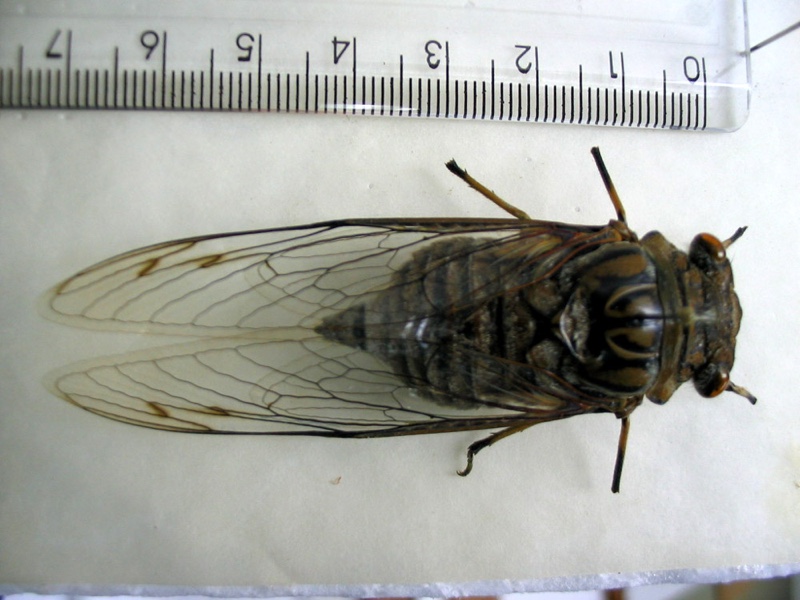
Here’s a snippet of an Archie McPhee advertisement for the Lucky Cicada toy/keychain. The image was sent to us my Suzanne M.
Whining Cicada with Blinking Eyes Keyring
Also called the “cicada toy that may shrill”This is for everyone who has lived with treefulls of these screaming locusts, has moved away from locust country, and secretly misses them. This lifelike beast, though, far beats any you might have encountered. When you press the metal button on its belly, its eyes flash green and it emits a gut-wrenching cicada whine that sounds like the background music in a science fiction thriller. And it lasts 20 whole seconds! And “since it has cells, you can play anytime.” That’s what it says. Black body, realistic, detailed green wings. 2-3/8″ long, about 1-1/2″ wide at the widest point. Great packaging. Each cicada is blistersealed on a 3-1/2″ x 5″ card with great illustrations. Part of the forest bug series. Nifty pocket clip. And, it’s a keyring. No one could live without this for very long after finding out it exists.
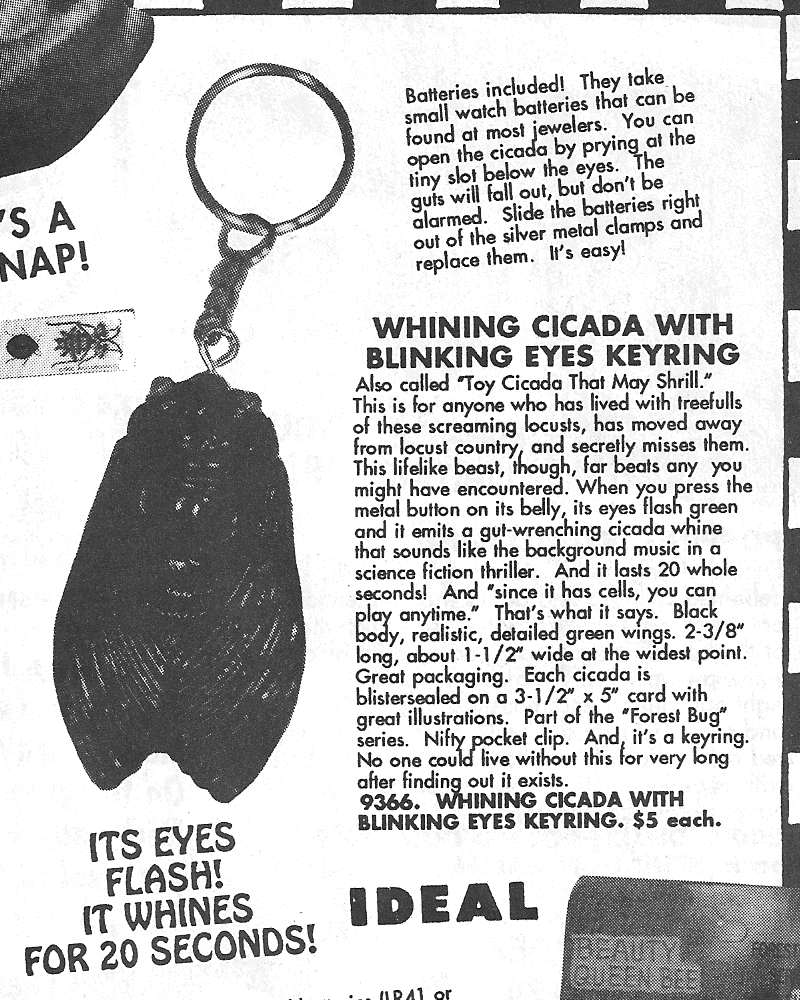
Back in the 1990’s Archie McPhee/Accoutrements distributed the Lucky Cicada, a toy with a keyring that would sing when you squeezed its abdomen. Its eyes lit up green too.
All we have now are memories and memorabilia, because they aren’t making them anymore. That said, there are manufacturers in China who have the plans and will make them. That’s a story for another day. Thanks to Roy Troutman for the images.
Front and back packaging:
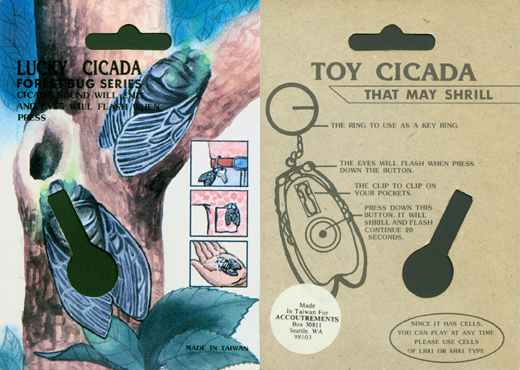
The keychain and packaging:
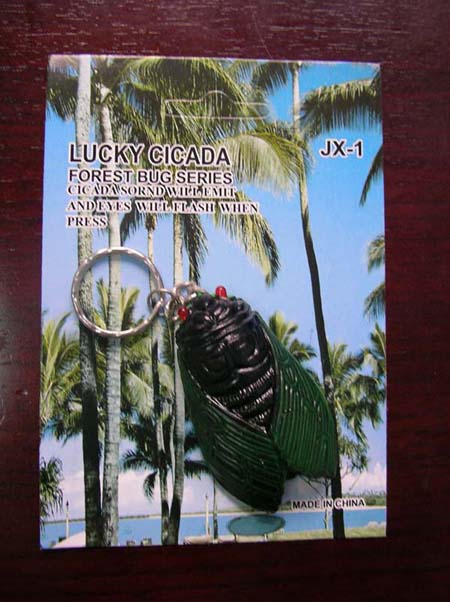
4 different paint jobs. And red eyes! Collect them all!
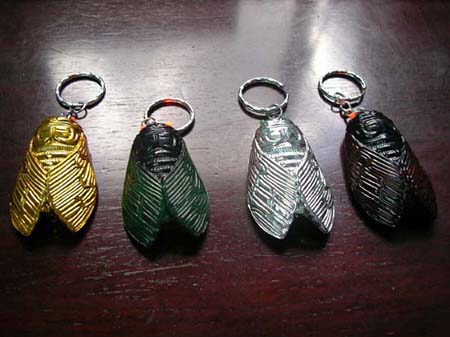
Continuing from part 1, Elias Bonaros did some digging and took these photos of first and second instar Magicicada periodical cicadas on a warm winter day (March 21, 2010).
Now you know what cicadas look like when they’re underground!
Generally speaking the ones with the bulbous abdomens are second instar, and the smaller ones with the less bulbous or not bulbous abdomens are first instar.
Have you every wondered what cicadas look like when they’re underground? Elias Bonaros did some digging and took these photos of first and second instar Magicicada periodical cicadas on a warm winter day (March 21, 2010). Magicicadas have 5 instars, or phases of development. Each phase has a slightly different appearance.
This is a probable second instar nymph of Magicicada septendecim (Periodical cicada) from the 2008 Brood XIV emergence. Dug up from beneath an oak tree. It was living approximately 4-6 inches from the ground surface. Temperature 70 degrees.
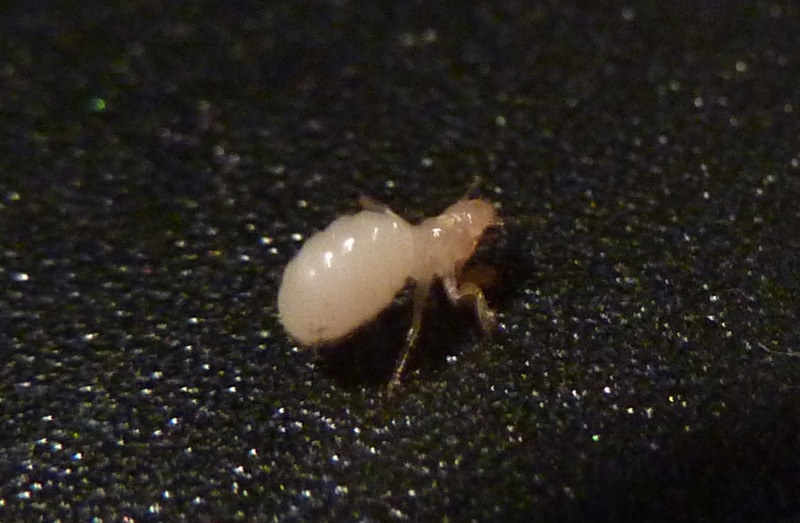
These are probable first and second instar nymphs of Magicicada septendecim (Periodical cicada) from the 2008 Brood XIV emergence. Dug up from beneath an oak tree. They were living approximately 4-6 inches from the ground surface. Temperature 70 deg.
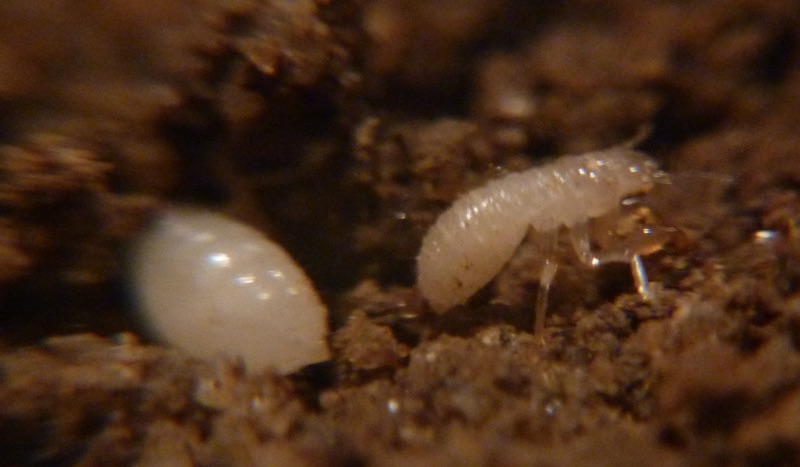
The Lucky Cicada Keychain was a keychain sold my Archie McPhee/Accouterments that featured a large plastic cicada that sang when you squeezed its abdomen. Don’t squeeze too hard, or the circuit board inside will snap.
Male Neotibicen tibicen tibicen molting. Other names for this cicada include: Morning Cicada, Swamp Cicada and formerly Tibicen chloromera or chloromerus.
Click each image for larger images:
Joe Green’s Neocicada hieroglyphica photos from 2007, Florida, part 2:
Joe Green’s Neocicada hieroglyphica photos from 2007, Florida, part 1: